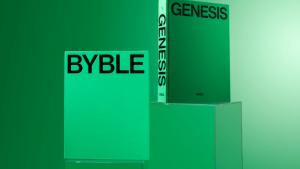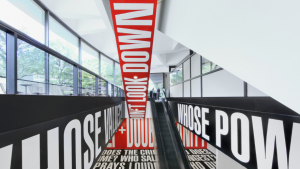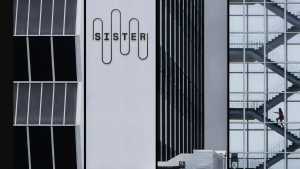10 design graduates from the world’s leading design schools took to the antenna 2020 virtual stage as part of Dutch Design Week to share projects that aim to tackle some of today’s most pressing problems.
As Dutch Design Week (DDW) 2020 kicked off with the theme ‘A New Intimacy’, the antenna speakers each shared their future-thinking projects, all conceived while at their respective schools. The DDW theme intended to call to mind the behavioural changes felt in a year so affected by a global pandemic. What new ways do we have to relate to each other? How do we create connections when asked to keep our distance? How does design play a role?
Inaugurated in 2017 by acclaimed creative platform Design Indaba and DDW, the fourth edition of antenna comprised 10 projects that address this issue of connection and more. Each of the designers responds to one or more of the Sustainable Development Goals (SDG) set out by the United Nations (UN) to transform the world and ensure healthier, happier, more equitable futures for all.
Today’s young designers shoulder great responsibility. Equipped with a better understanding of the implications of consumerism and the potential damage that can be done to the world and its inhabitants, these next-generation thinkers have the opportunity to do things differently and perhaps repair some of the harm that has already been done.
The COVID-19 pandemic has thrown into sharp focus many of the social problems that we were already aware of: global healthcare, the climate crisis, poverty, and inequality. In keeping with the DDW theme, many of the progressive projects touch on the search for intimacy and connection by looking at new ways you can bring people together, include the excluded, and provide care and support where it is lacking.
Saddened by the disproportionate number of stress-related deaths amongst black mothers in the United States, Victoria Ayo’s Birth Reborn project builds community and a support network during pregnancy, birth and beyond.
Pratt Institute graduate Danielle Begnaud’s project Brain Bridges involves children in the process of designing their material landscape by thinking of them as partners instead of end users.
Brunel University graduate Solveiga Pakštaitė’s inclusive food label Mimica Touch can be read by visually impaired users as well as sighted and could radically reduce food waste by providing real-time, accurate information on food spoilage. Her radical idea was sparked when she had the chance to ask visually impaired people how they get around everyday challenges.
Also motivated by a desire to make design more accessible, Kosuke Takahashi has created Braille Neue, a truly inclusive typeface that can be read with the fingertips or the eyes. This creates a new form of connection between Braille readers and sighted people.
South African architecture student Joshil Naran looked at how to rebalance the power plays that are deeply embedded in the apartheid urban planning in a suburb of Johannesburg.
Meanwhile in Kenya, Canadian designer and student of the Design Academy Eindhoven Coltrane McDowell looked into the potential of scent as a medium to tell stories and is currently working on creating a rose perfume with Nairobi’s informal liquor distilleries.
Royal College of Art graduate Ricky Stoch has created a sticker called FebriSol that works as a tracking system and alleviates the problems of treatment adherence for those on chronic medications. Designed with the HIV/AIDs epidemic in mind, simple systems like FebriSol can also help with many other conditions and may even become useful in the long-term treatments of health problems caused by COVID-19.
Industrial designer Xavier Ouellet’s project Aflot proposes an alternative way of handling coastal erosion along coastlines where climate change means that there are no longer ice banks to protect the land from winter storms.
In Plus Minus 25º Anna Koppmann and Esmée Willems look into reviving low-tech solutions for controlling the temperature of indoor spaces by integrating phase changing material into curtains. Their work is also in response to the temperature changes in cities caused by global warming.
In her project Flowing Garments, RISD graduate Fengjiao Ge explores how consumerism and fast fashion is damaging the natural environment and rethinks how textile waste can be used in landscape design and construction. With the proposals put forward in Flowing Garments, Ge invites us to question our perception of value.
As ever, antenna provided profound food for thought. The international speakers are not only inventors; they are storytellers, all galvanised into action by personal experiences and observations, or by passions and hobbies that grew into social causes
It is painfully clear that we need to take decisive steps towards making positive change. The designers, thinkers and makers from the antenna stage have, as ever, asked us to examine our choices and behaviours, by looking from a creative vantage point that allows us all to see solutions where there are problems.






